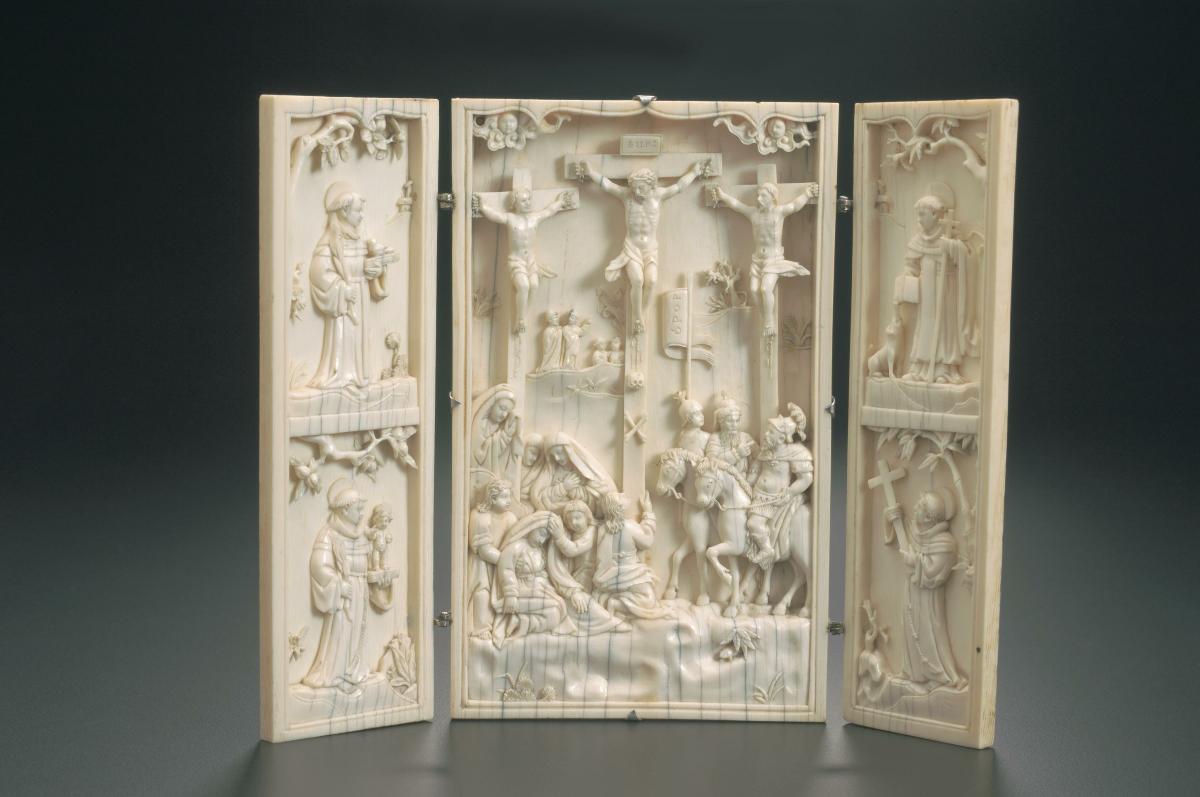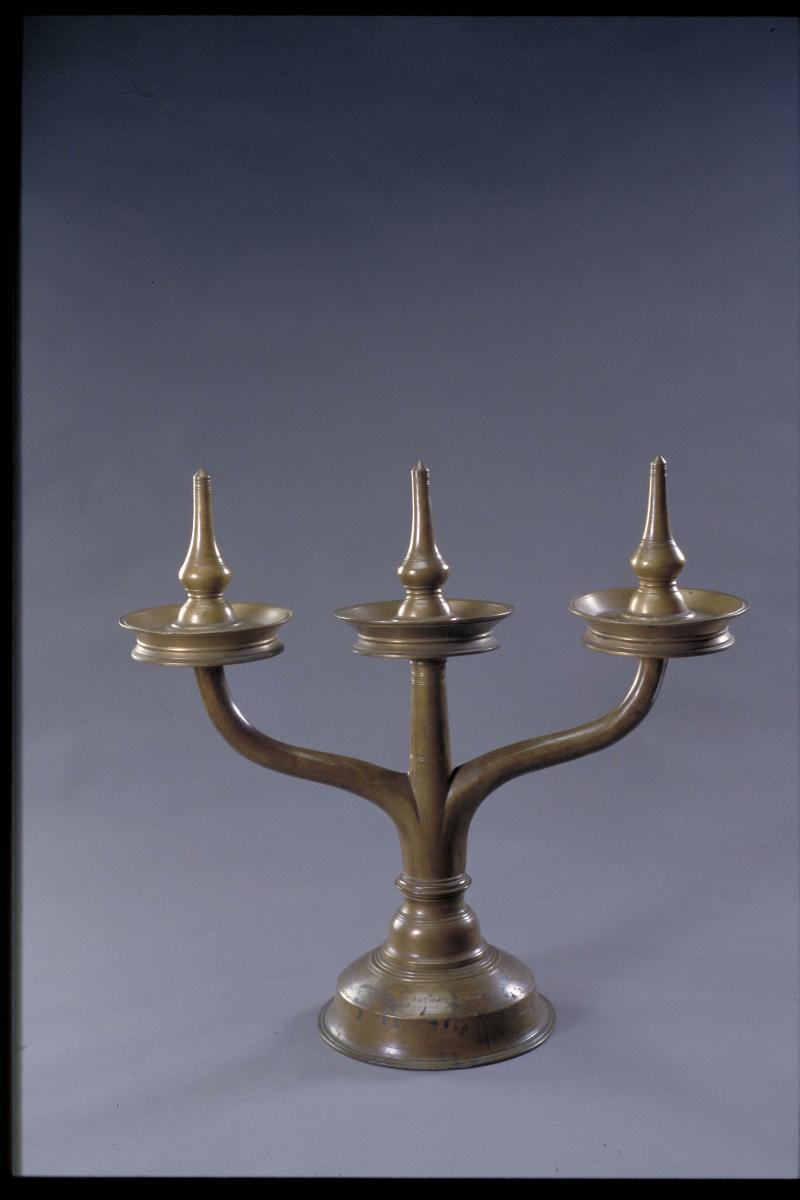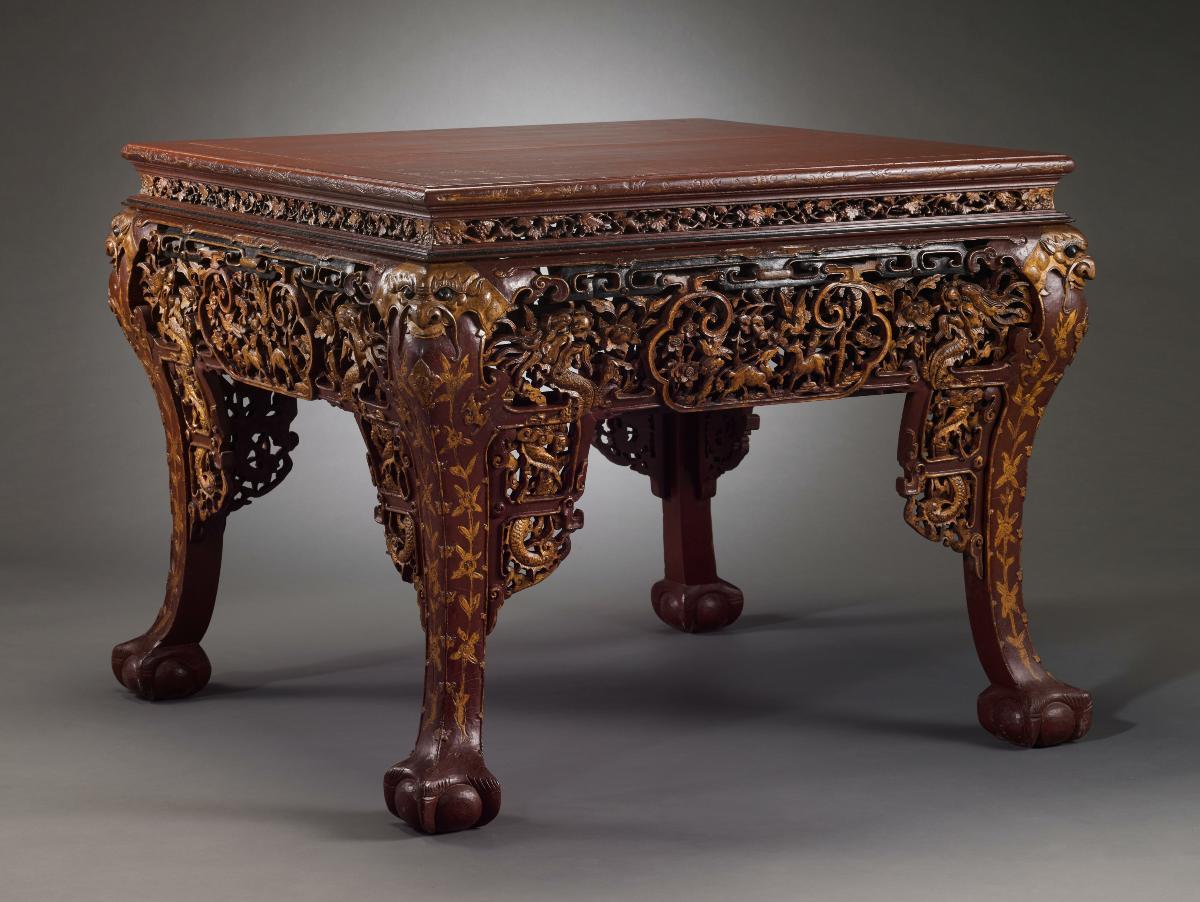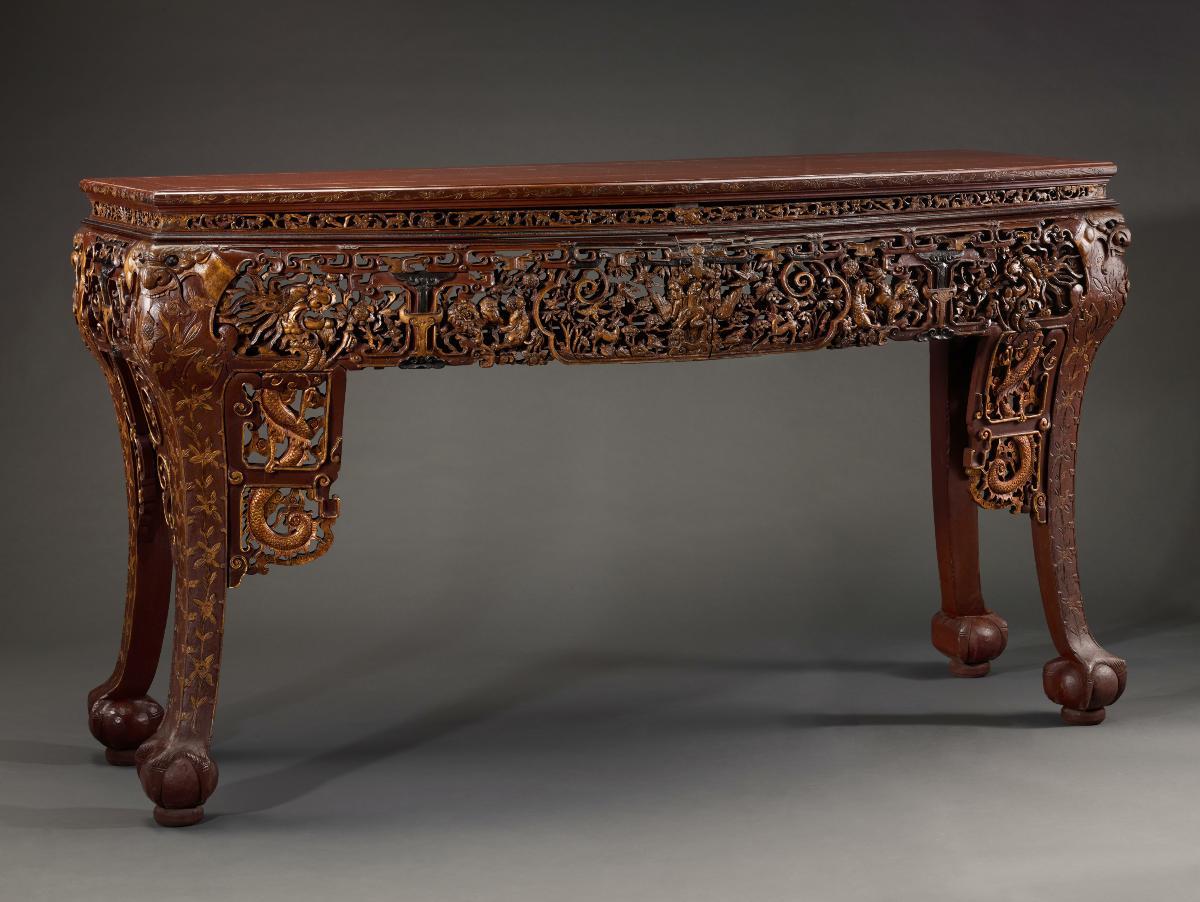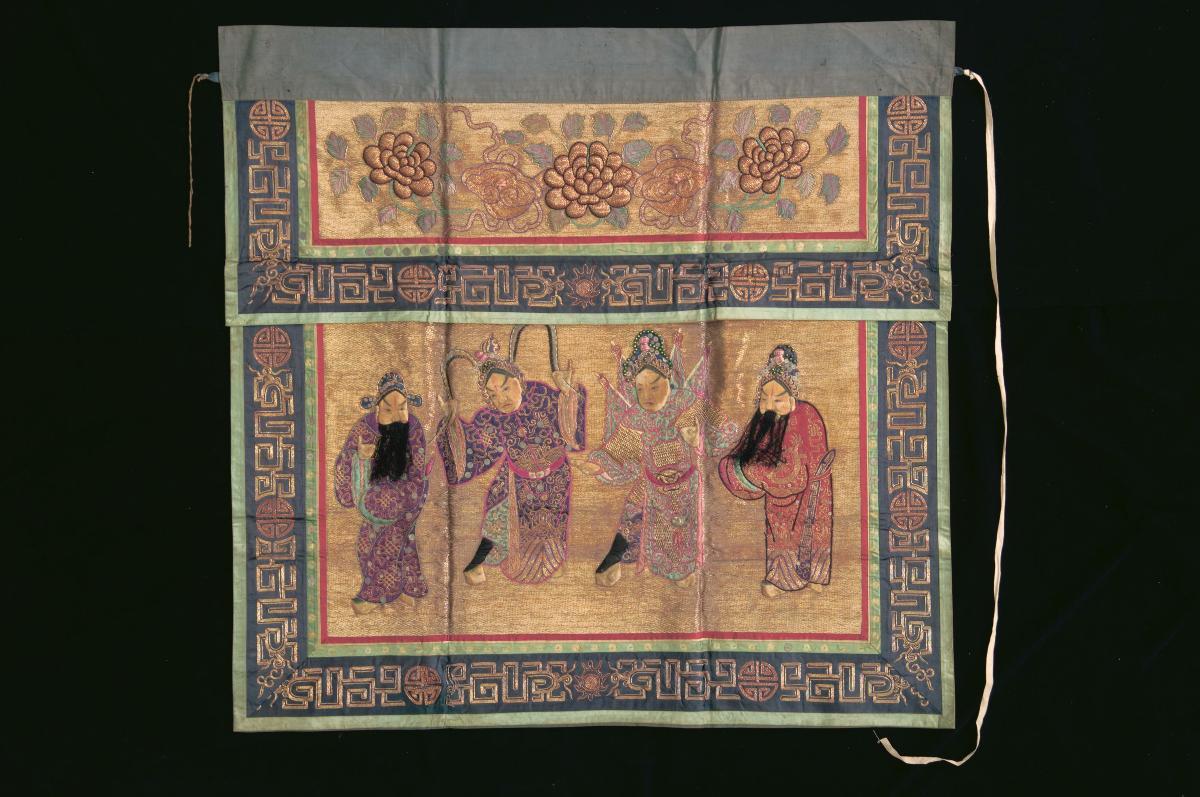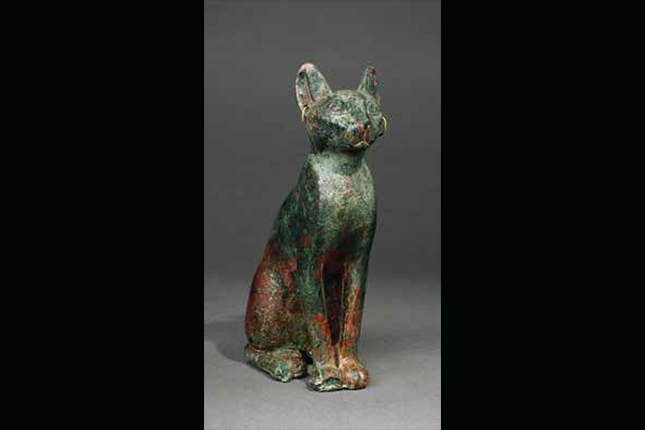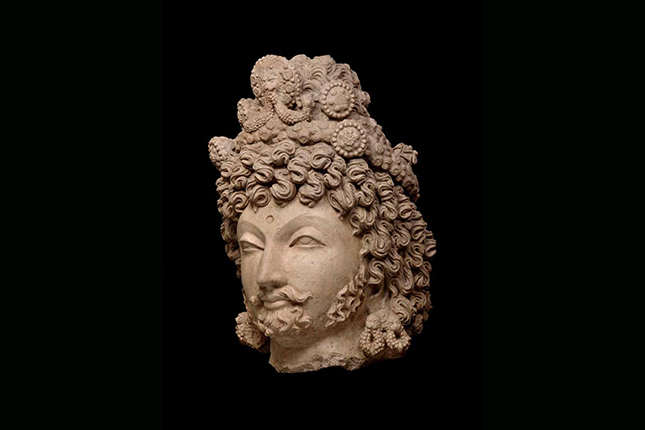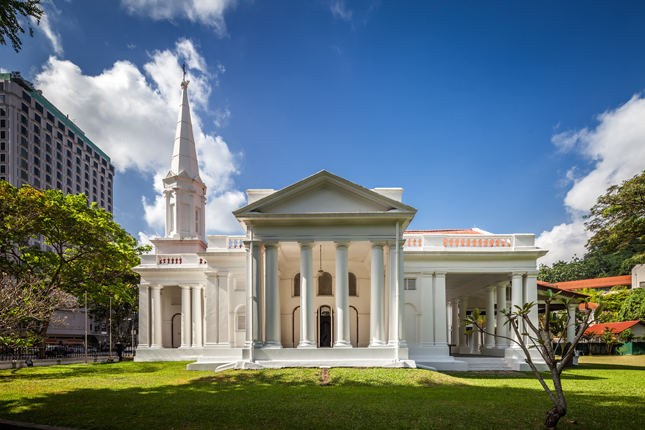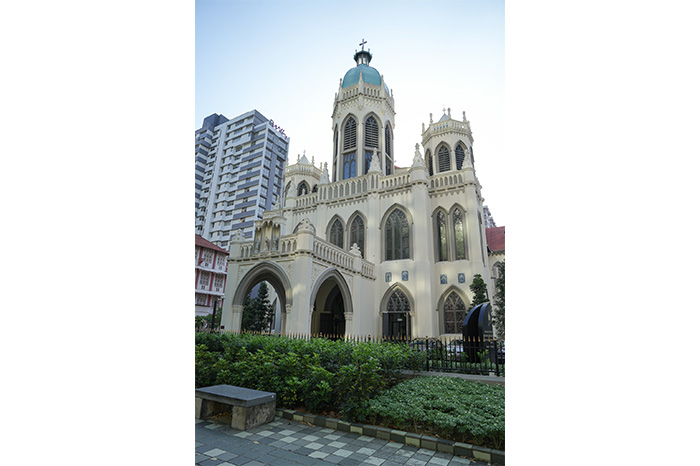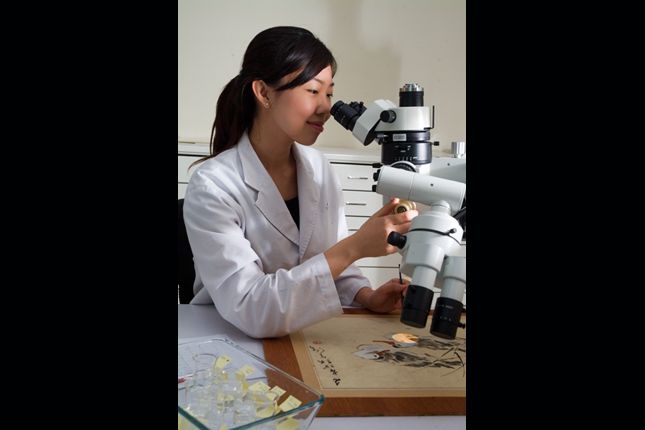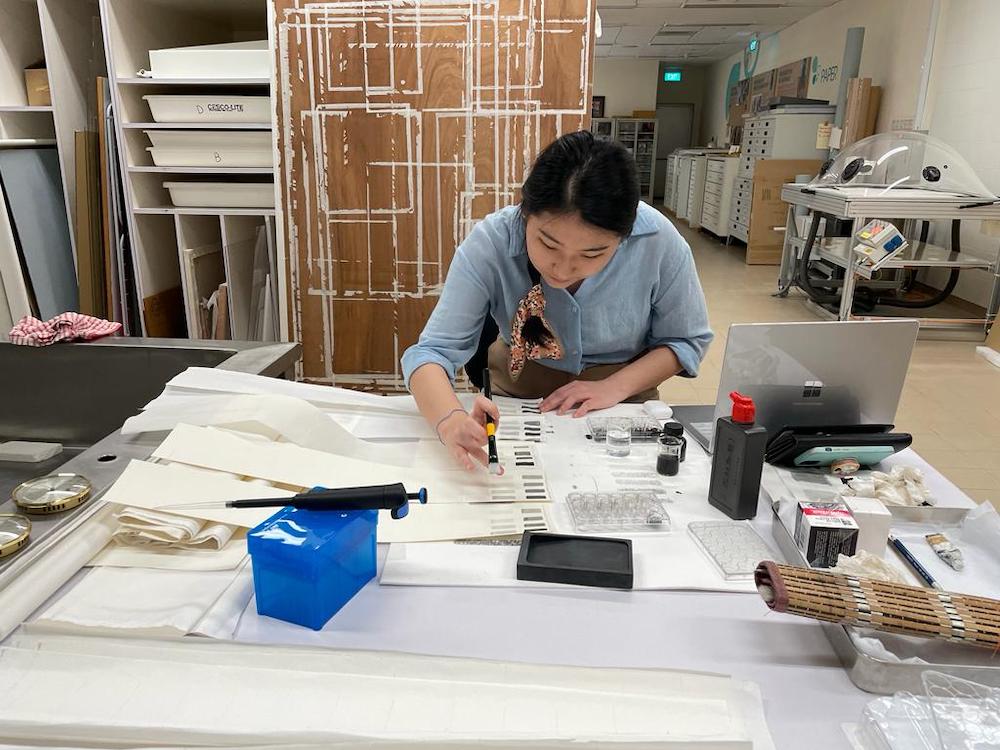x W: 19.6,
x D: 1.4 cm
This highly refined and remarkably well preserved ivory triptych depicts the crucifixion of Christ and is flanked by four smaller images portraying saints. Such triptych, so-called because they consist of three carved or painted panels which could be folded up for portability, first became popular in Europe in the Middle Ages. These were most commonly used as decorative devotional objects on altars.This ivory triptych was made by a craftsman trained in the Chinese carving tradition and was probably produced in Southern China, or perhaps in another major production centre such as Macao or Manila. Carved ivories were an important trade item in the 17th and 18th centuries, particularly Christian art produced for markets served by the so-called Galleon trade centred on Manila, Mexico and ultimately Spain. Raw ivory obtained largely in Africa was brought to Asia to be carved into a host of decorative objects both for church use as well as for the household altars of wealthy individuals.




